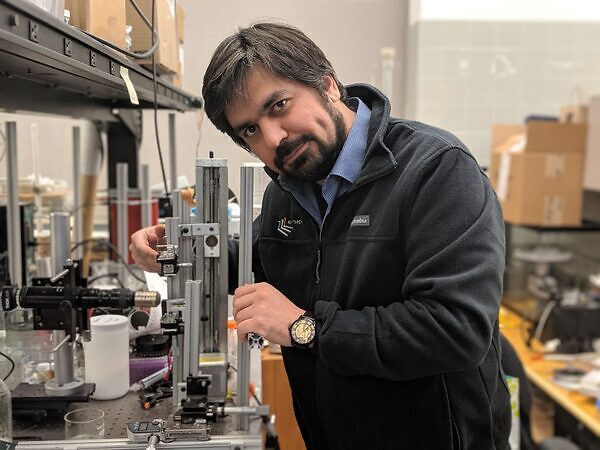Virtual Seminar"Time–connectivity superposition and the gel/glass duality of weak colloidal gels"Bavand Keshavarz

Date
Location
Description
Micro/Bio/Nanofluidics (Shen) Unit would like to invite you to the virtual seminar by Dr. Bavand Keshavarz on August 16 (Monday).
----------------------------------------------------------------------
Date: Monday, August 16, 2021
Time: 09:00-10:00
**Zoom session
----------------------------------------------------------------------
Join Zoom Meeting
https://oist.zoom.us/j/88615641335?pwd=YkovdmlYMzIyNGVVRWcvdnZFK1REZz09
Meeting ID: 886 1564 1335
Passcode: 484480
Speaker:
Dr. Bavand Keshavarz
Mechanical Engineering
MIT, USA
Title:
Time–connectivity superposition and the gel/glass duality of weak colloidal gels
Abstract:
Colloidal gels result from the aggregation of Brownian particles suspended in a solvent. Gelation is induced by attractive interactions between individual particles that drive the formation of clusters, which in turn aggregate to form a space-spanning structure. We study this process in aluminosilicate colloidal gels through time-resolved structural and mechanical spectroscopy. Using the time–connectivity superposition principle a series of rapidly acquired linear viscoelastic spectra, measured throughout the gelation process by applying an exponential chirp protocol, are rescaled onto a universal master curve that spans over eight orders of magnitude in reduced frequency. This analysis reveals that the underlying relaxation time spectrum of the colloidal gel is symmetric in time with power-law tails characterized by a single exponent that is set at the gel point. The microstructural mechanical network has a dual character; at short length scales and fast times it appears glassy, whereas at longer times and larger scales it is gel-like. These results can be captured by a simple three-parameter constitutive model and demonstrate that the microstructure of a mature colloidal gel bears the residual skeleton of the original sample-spanning network that is created at the gel point. Our conclusions are confirmed by applying the same technique to another well-known colloidal gel system composed of attractive silica nanoparticles. The results illustrate the power of the time–connectivity superposition principle for this class of soft glassy materials and provide a compact description for the dichotomous viscoelastic nature of weak colloidal gels.
Host:
Prof. Amy Shen
Subscribe to the OIST Calendar: Right-click to download, then open in your calendar application.



